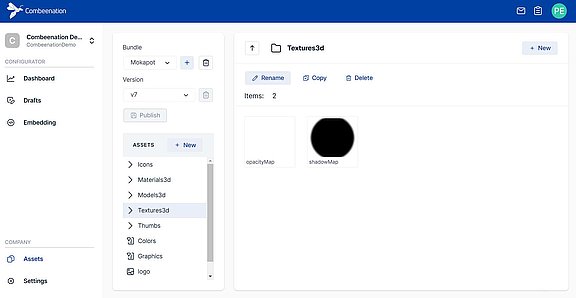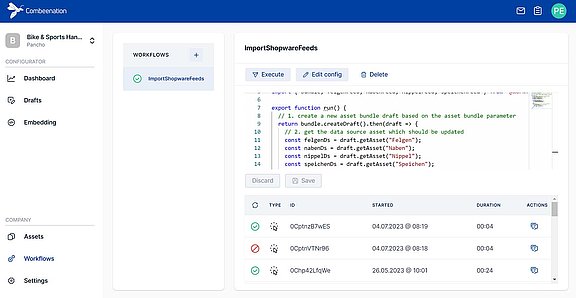How to use your existing product data within Combeenation
Author: Patrick Ecker
Are you seeking a more efficient approach to leveraging your product data within your Combeenation configurator? If your answer is 'yes,' then you've come to the right place. This article should provide answers that you might have had regarding the data management around Combeenation configurators. Keep reading to discover the benefits that await you.
Avoid duplicates
Managing the same data in multiple places, most likely, always leads to problems (time-consuming, error prone, outdated data, ...). In order to avoid those, we will now cover the three key areas of data management within Combeenation:
- Asset manager
- Configurator editor
- Workflows
Asset manager: Manage your assets
Before diving into configurators, let's take a closer look at assets within Combeenation. Combeenation offers an asset manager, which serves as a dedicated area for managing your product data and assets.
Before diving into configurators, let's take a closer look at assets within Combeenation. Combeenation offers an asset manager, which serves as a dedicated area for managing your product data and assets.
When starting to build a configurator, you typically upload the data manually to the asset manager. However, Combeenation's asset manager also provides automated methods for updating the data, which we will discuss in more detail later.
In essence, asset bundles serve as repositories for files that contain your product-related information. This centralized approach streamlines data management and ensures that all the necessary assets are readily available for your configurator.

Configurator checklist
Avoid stumbling blocks.

Configurator editor: Connect the data with your logic
The editor serves as the primary starting point for your configurator journey. It enables you to build the user interface and define the entire product logic. To access product data within the editor, you can connect your configurator to one or multiple asset bundles.
Once connected, you gain access to all the assets contained within the bundle(s). For instance, you can filter your product data based on the current input settings and display the filtered results in a data view.
One significant advantage of this approach, which separates the logic from the product data, is that you can use the same asset bundle in multiple configurators without duplicating the data.
Moreover, the asset bundles are versioned, and each configurator is connected to a specific version of the bundle. This feature simplifies the development process as you can update asset bundles without impacting existing live configurators. Once you are confident that the data in the new asset bundle version is correct, you can update the live configurator to utilize the newer version, ensuring a seamless transition.
Workflows: 24/7
In addition to manual data updates, Combeenation offers a powerful feature called workflows to handle scenarios where regular data updates are required. Workflows are short JavaScript-based snippets that enable you to perform specific actions and update your asset bundles automatically.
One of the key advantages of workflows is the ability to schedule them in a CRON-based fashion. This means you can set up scheduled tasks to run at specified intervals. For instance, you can schedule a workflow to retrieve new prices from your ERP system's REST endpoint every day at 10:00. This workflow can then update the corresponding data source asset within your asset bundle.
Once the workflow has successfully updated the data, you can proceed to update your configurator to utilize the new asset bundle. By doing so, the updated data becomes live and is reflected in the configurator for your customers to experience.
Workflows provide an automated and efficient way to keep your data up to date, particularly for dynamic elements such as prices, stock counts, and other frequently changing information. With Combeenation's workflow functionality, you can ensure that your configurator always reflects the most accurate and current data without manual intervention.

For more information about data flows in Combeenation, please refer to our documentation or visit our forum. Both resources offer valuable insights and support for your queries regarding data management in Combeenation.

Configurator checklist
Avoid stumbling blocks.
